Kaunas Aleksotas airport
Several days ago I had the occasion to walk around old Kaunas airport - one of the oldest airports in Europe. Despite the fact that more than 20 years ago main aviation activities moved to the Karmėlava airport at the outskirts of the town old airport is still used for the sports and small aviation.
Typically people calls it Aleksotas airport. This name was always very popular in everyday use despite the fact that for a long it was officially called Kaunas airport and about 20 years ago it was officially renamed to S.Darius and S. Girėnas airport to commemorate Lithuanian legendary prewar transatlantic pilots.
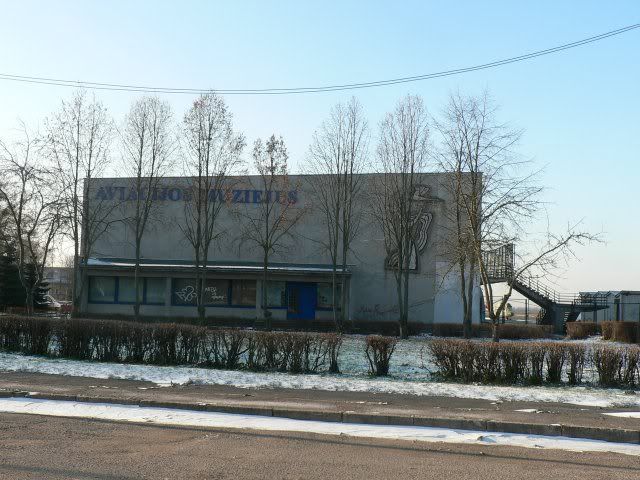
Kaunas Aleksotas airport is one of the oldest airports in Europe and also in the world (if not the oldest among still functioning airports) . This airport was built in 1915 by the German army during WWI for the army needs (still this airport occupies exactly the same area and landing strip is at the exactly same place that was designed in 1915). But this wasn't the first airfield in this town: the first was built in 1912 by the Russian army in the Panemunė district. But since the strategic position of the old airfield wasn't good and the area designated to it was small Germans built their airfield in the Aleksotas district. In 1915 there was built then the largest building in Lithuania - hangar for the Zeppelin as well as two hangars for the planes. In 1919 the airport became the main base center for Lithuanian aviation: on February 27, 1919 there landed eight planes LVG bought in Germany. On March 1, 1919 they made their first flights with Lithuanian signs.
Aleksotas airport very soon became international airport: on July 26, 1921 the regular daily line Koenigsberg - Kaunas has been opened. Soon this line has been expanded to the route Berlin-Stettin-Danzig-Koenigsberg-Kaunas (and once in a week to Riga). In May 1922 "Deruluft" opened regular connection Koenigsberg-Kaunas-Smolensk-Moscow which was soon expanded to the route Berlin-Danzig-Koenigsberg-Kaunas-Smolensk-Moscow (when in 1935 Poland closed it's airspace to German planes then Velikye Luki was used as a stop instead of Smolensk). In 1923 a regular connection Koenisberg-Kaunas-Riga-Tallinn-Helsinki was opened. So for the early 1920s airport was really busy point on a European scale. In the 1930s there were flights on the route Warsaw -Kaunas-Riga-Helsinki, also connections with Stockholm. From 1938 there were regular internal flights Kaunas-Palanga.
All those international connections were closed on June 16, 1940 when Red Army captured airport (this airport was one of their primary targets during invasion to Lithuania). In 1940-1941 it was used as a Soviet airbase, in 1941-1944 as a Luftwaffe base, after 1944 again as a Soviet military base. In early 1950s airport became civilian object and regular connections with other towns (but then only within USSR) were opened. Airport landing strip is only 1300 meters in length and this was very limiting factor for the flights: in the 1980s Aleksotas was treated as one of the most dangerous airports in Europe. Only one jet plane in the world - Yak-40 - may use this airport and several turboprops - An-24, Il-14, etc. Despite that in the 1980s it was a base for about 15 Yak planes and there were connections with a lot of cities: the most distant of them being Odessa and Simferopol. In 1988 the airport was stopped to use for the regular passenger connections when a new Karmėlava airport has been opened (paradoxically but the opening of the new airport decreased significantly the number of connections to Kaunas for a very long time: the new airport was a landing strip only. In 1993 hangar proudly called "provisional passenger terminal" was built. And only in 2006-2007 real terminal for passengers was opened. So only from 2010 Kaunas again has "normal" air connections - at least with 20 destinations in Europe). But old airport is still used for the small aviation and don't want to retire.
I found at the site ww.miestai.net/forumas old photo of the airport in the 1930s: "Deruluft" plane on the route between Berlin and Moscow. Deruluft (Deutsch-Russische Luftverkehrs) was a joint company of Germany (Deusche Aero Lloyd, which was in 1925 reorganized to Deutsche Lufthansa which still is German flagship air carrier) and Soviet Narkomvneshtorg. For a long time this airline was the single airline connecting whole USSR with the external world by air. From 1935 line has been served separately by the Lufthansa and Aeroflot. Line was closed in autumn 1937 and again for a while reopened in autumn 1939.
For me the most interesting thing is the bold building of airport terminal. I can't find any info about the fate of this building:

In 1970 there was built passenger terminal which was used till 1988. Now it hosts aviation museum but I wasn't inside:

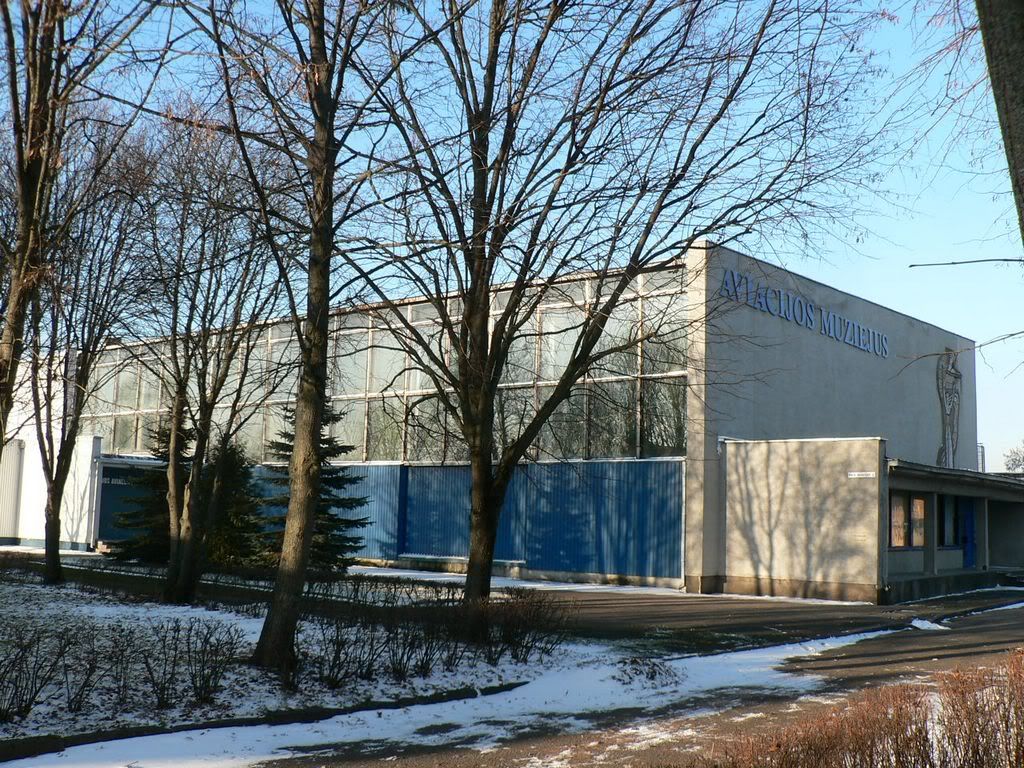
The old terminal was somewhere there:

Remaining mosaic from the period:
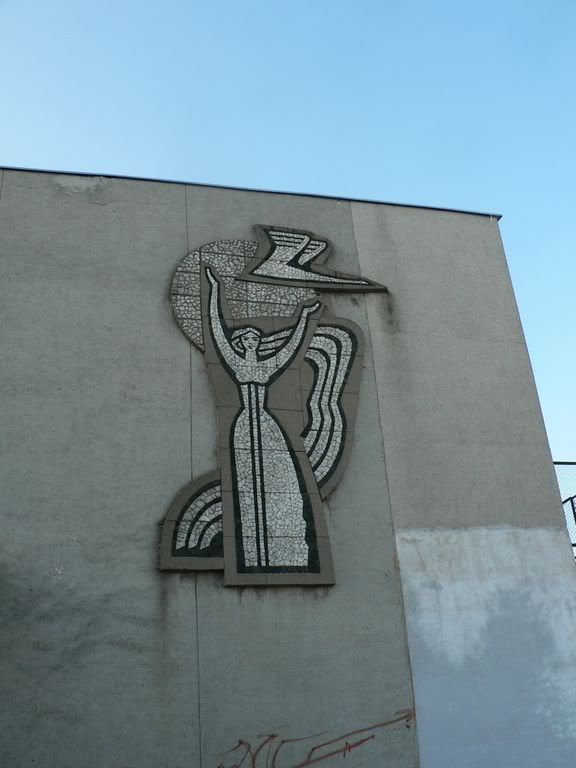
At the second floor many years ago there were waiting hall and the restaurant. Passengers went downstairs and crossed the security checkpoint which was in the open air ...
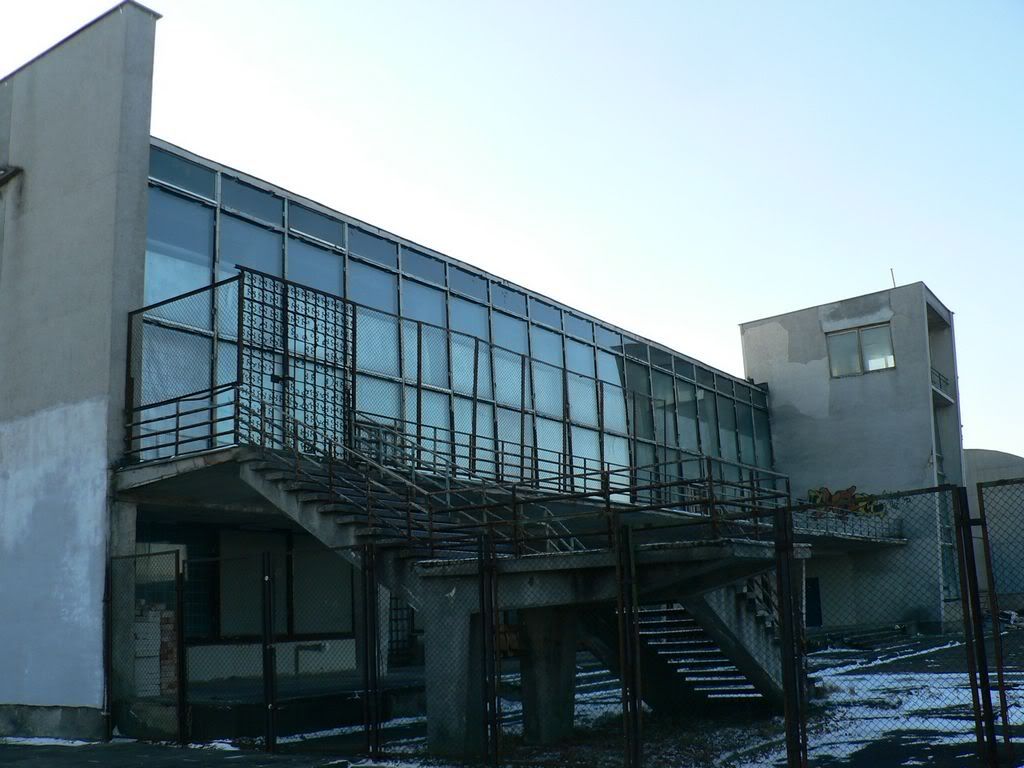
Around the old terminal small collection of flying machines belonging to the museum stands. This helicopter crashed in the Baltic sea in 2003 - the single air crash in Lithuanian airforce after 1990:
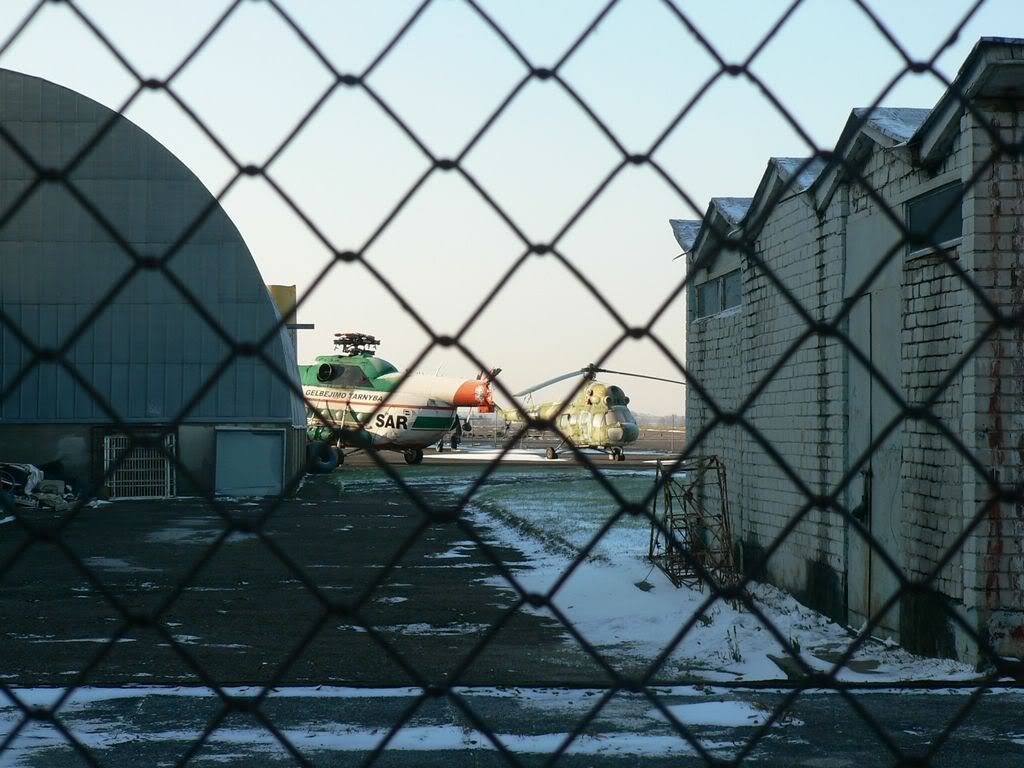
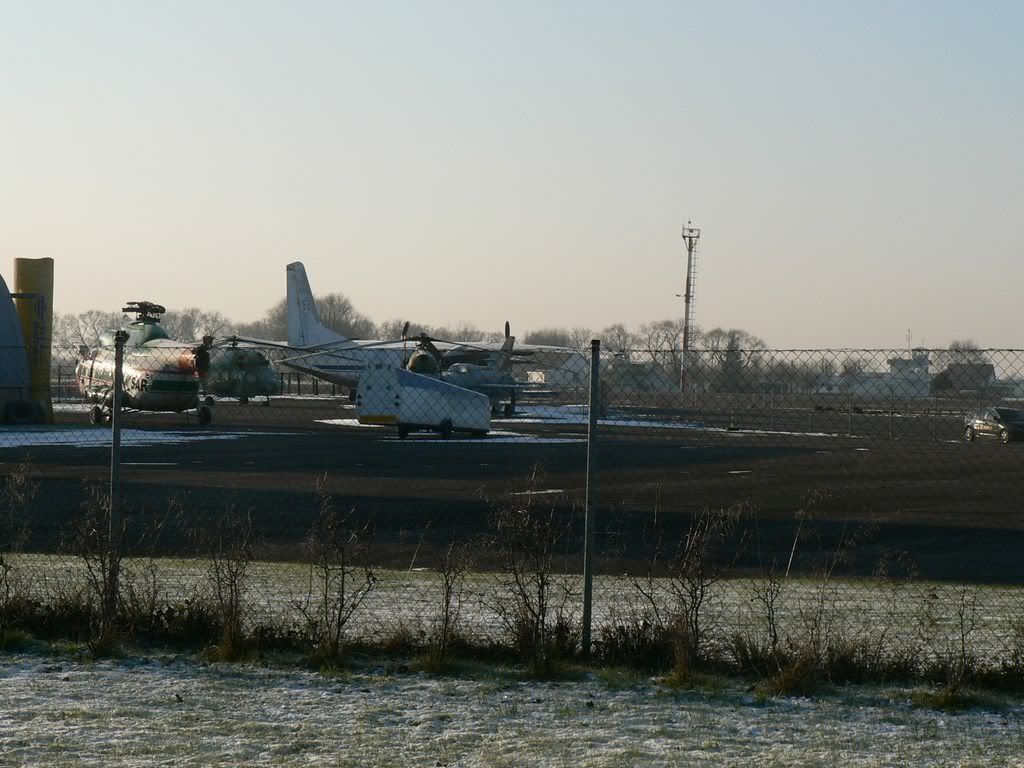
Some other modest airport buildings:

The sign telling that you are approaching the airport:
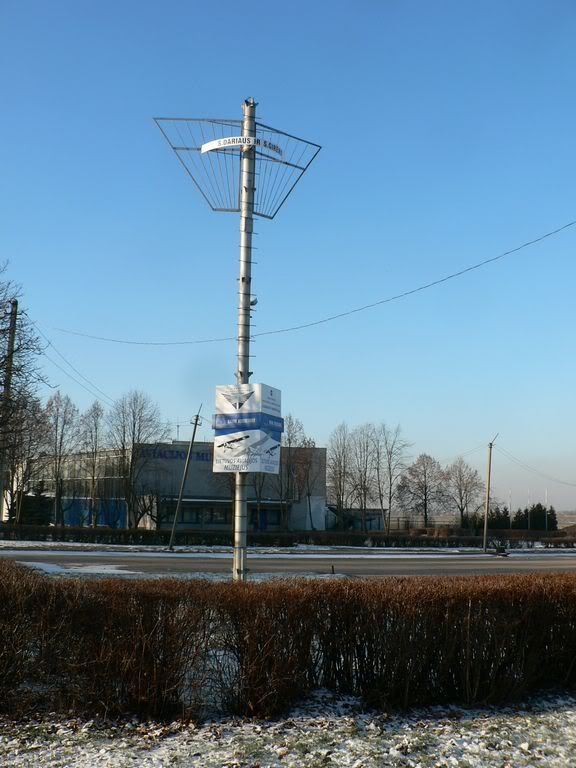
In 2000 memorial for the aviators was built:
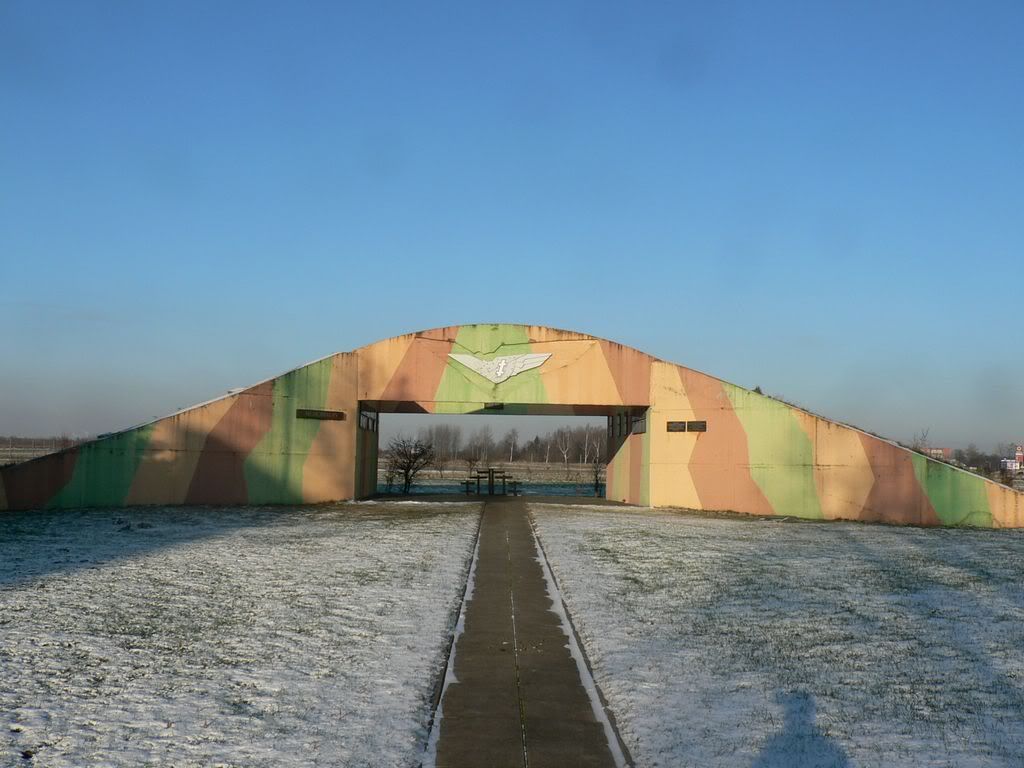
There you can find memorial tables with the names of the pioneers of Lithuanian aviation. One of them is devoted to Ignas Adamkavičius - father of former president V. Adamkus. Table clearly states "Ignas Adamkavičius - first Lithuanian military pilot":
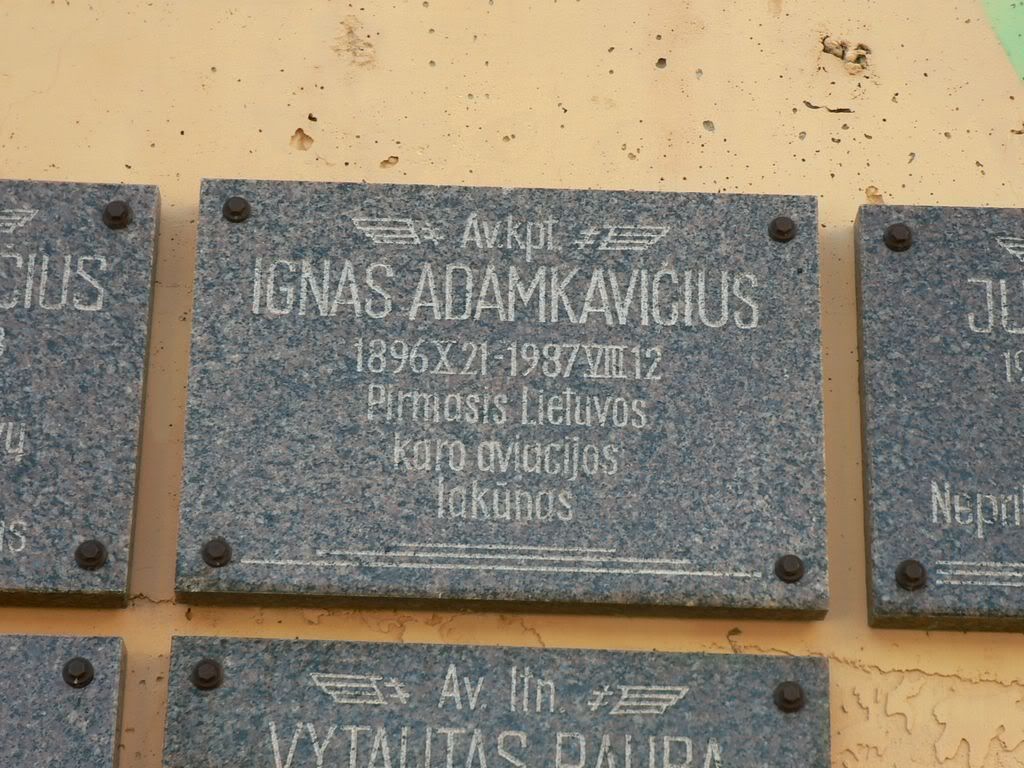
Tables to those two pilots who lost their lives in 2003 in the Baltic sea:
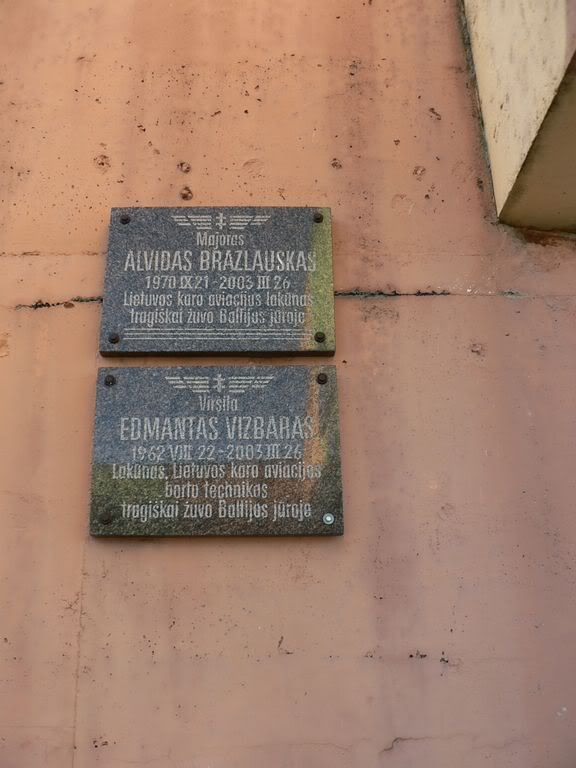
And finally I will try to show why this airport was treated as the one of the most dangerous in the Europe.
Railway line going to the airfield and going few meters away from the landing strip:
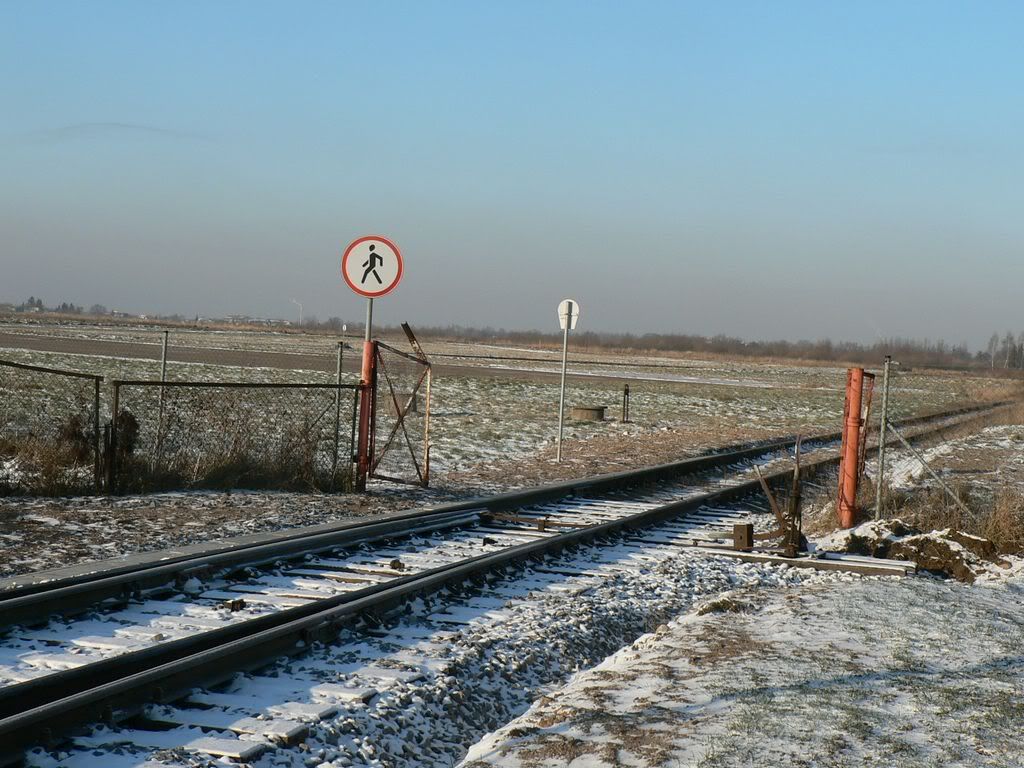
Near the airport lies Veiverių street - the main transport artery of the Aleksotas district. The distance between the street and the landing strip is about 15 meters. The length of the landing strip is 1300 meters. On the other side of strip the downhill begins immediately. So the pilots don't had wide possibilities to maneuver. And now imagine traffic on the street and Yak-40 going down to the airport :)))
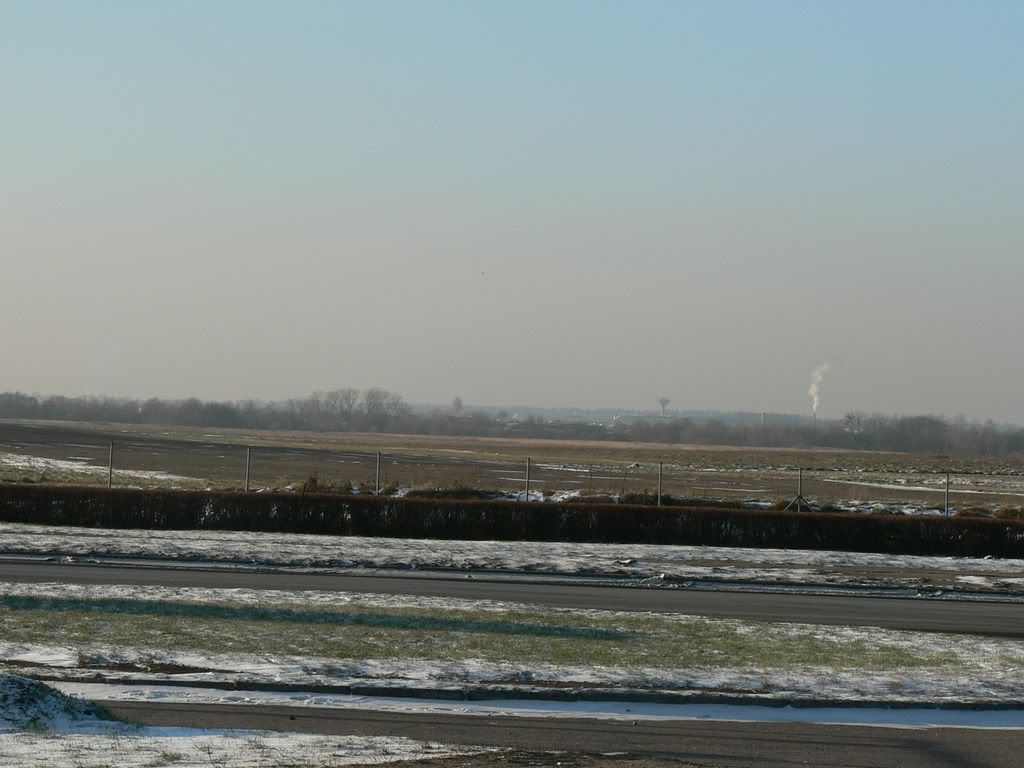
How it looks with cars present :)))
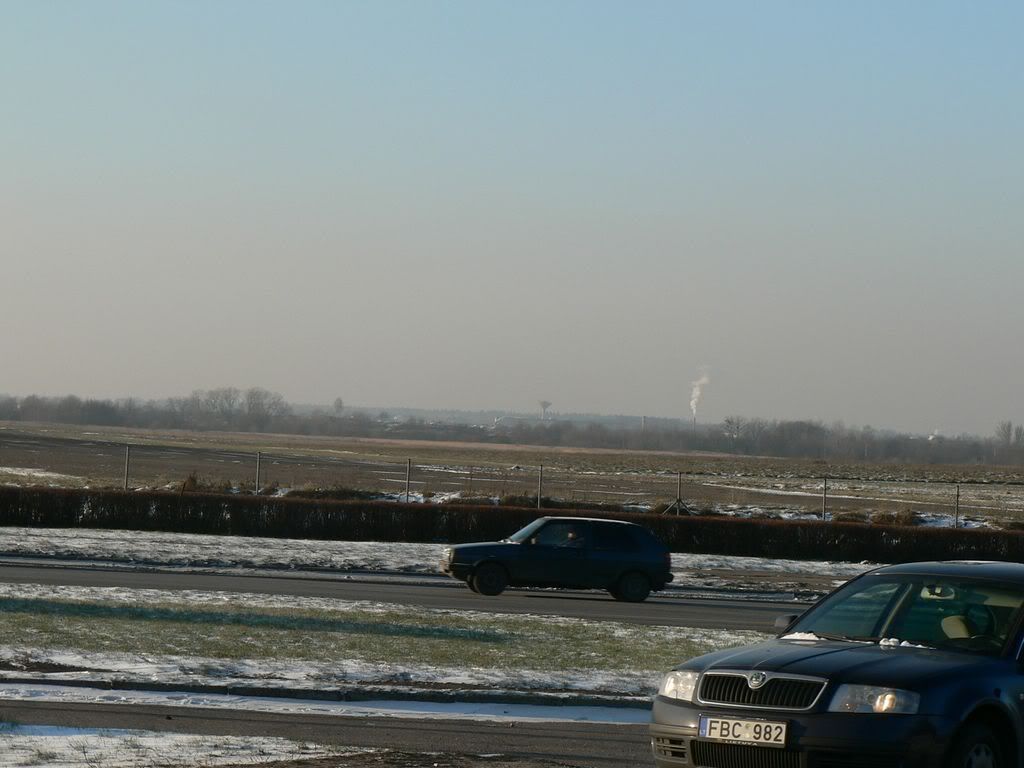

counter widget
Typically people calls it Aleksotas airport. This name was always very popular in everyday use despite the fact that for a long it was officially called Kaunas airport and about 20 years ago it was officially renamed to S.Darius and S. Girėnas airport to commemorate Lithuanian legendary prewar transatlantic pilots.

Kaunas Aleksotas airport is one of the oldest airports in Europe and also in the world (if not the oldest among still functioning airports) . This airport was built in 1915 by the German army during WWI for the army needs (still this airport occupies exactly the same area and landing strip is at the exactly same place that was designed in 1915). But this wasn't the first airfield in this town: the first was built in 1912 by the Russian army in the Panemunė district. But since the strategic position of the old airfield wasn't good and the area designated to it was small Germans built their airfield in the Aleksotas district. In 1915 there was built then the largest building in Lithuania - hangar for the Zeppelin as well as two hangars for the planes. In 1919 the airport became the main base center for Lithuanian aviation: on February 27, 1919 there landed eight planes LVG bought in Germany. On March 1, 1919 they made their first flights with Lithuanian signs.
Aleksotas airport very soon became international airport: on July 26, 1921 the regular daily line Koenigsberg - Kaunas has been opened. Soon this line has been expanded to the route Berlin-Stettin-Danzig-Koenigsberg-Kaunas (and once in a week to Riga). In May 1922 "Deruluft" opened regular connection Koenigsberg-Kaunas-Smolensk-Moscow which was soon expanded to the route Berlin-Danzig-Koenigsberg-Kaunas-Smolensk-Moscow (when in 1935 Poland closed it's airspace to German planes then Velikye Luki was used as a stop instead of Smolensk). In 1923 a regular connection Koenisberg-Kaunas-Riga-Tallinn-Helsinki was opened. So for the early 1920s airport was really busy point on a European scale. In the 1930s there were flights on the route Warsaw -Kaunas-Riga-Helsinki, also connections with Stockholm. From 1938 there were regular internal flights Kaunas-Palanga.
All those international connections were closed on June 16, 1940 when Red Army captured airport (this airport was one of their primary targets during invasion to Lithuania). In 1940-1941 it was used as a Soviet airbase, in 1941-1944 as a Luftwaffe base, after 1944 again as a Soviet military base. In early 1950s airport became civilian object and regular connections with other towns (but then only within USSR) were opened. Airport landing strip is only 1300 meters in length and this was very limiting factor for the flights: in the 1980s Aleksotas was treated as one of the most dangerous airports in Europe. Only one jet plane in the world - Yak-40 - may use this airport and several turboprops - An-24, Il-14, etc. Despite that in the 1980s it was a base for about 15 Yak planes and there were connections with a lot of cities: the most distant of them being Odessa and Simferopol. In 1988 the airport was stopped to use for the regular passenger connections when a new Karmėlava airport has been opened (paradoxically but the opening of the new airport decreased significantly the number of connections to Kaunas for a very long time: the new airport was a landing strip only. In 1993 hangar proudly called "provisional passenger terminal" was built. And only in 2006-2007 real terminal for passengers was opened. So only from 2010 Kaunas again has "normal" air connections - at least with 20 destinations in Europe). But old airport is still used for the small aviation and don't want to retire.
I found at the site ww.miestai.net/forumas old photo of the airport in the 1930s: "Deruluft" plane on the route between Berlin and Moscow. Deruluft (Deutsch-Russische Luftverkehrs) was a joint company of Germany (Deusche Aero Lloyd, which was in 1925 reorganized to Deutsche Lufthansa which still is German flagship air carrier) and Soviet Narkomvneshtorg. For a long time this airline was the single airline connecting whole USSR with the external world by air. From 1935 line has been served separately by the Lufthansa and Aeroflot. Line was closed in autumn 1937 and again for a while reopened in autumn 1939.
For me the most interesting thing is the bold building of airport terminal. I can't find any info about the fate of this building:

In 1970 there was built passenger terminal which was used till 1988. Now it hosts aviation museum but I wasn't inside:


The old terminal was somewhere there:

Remaining mosaic from the period:

At the second floor many years ago there were waiting hall and the restaurant. Passengers went downstairs and crossed the security checkpoint which was in the open air ...

Around the old terminal small collection of flying machines belonging to the museum stands. This helicopter crashed in the Baltic sea in 2003 - the single air crash in Lithuanian airforce after 1990:


Some other modest airport buildings:

The sign telling that you are approaching the airport:

In 2000 memorial for the aviators was built:

There you can find memorial tables with the names of the pioneers of Lithuanian aviation. One of them is devoted to Ignas Adamkavičius - father of former president V. Adamkus. Table clearly states "Ignas Adamkavičius - first Lithuanian military pilot":

Tables to those two pilots who lost their lives in 2003 in the Baltic sea:

And finally I will try to show why this airport was treated as the one of the most dangerous in the Europe.
Railway line going to the airfield and going few meters away from the landing strip:

Near the airport lies Veiverių street - the main transport artery of the Aleksotas district. The distance between the street and the landing strip is about 15 meters. The length of the landing strip is 1300 meters. On the other side of strip the downhill begins immediately. So the pilots don't had wide possibilities to maneuver. And now imagine traffic on the street and Yak-40 going down to the airport :)))

How it looks with cars present :)))

counter widget